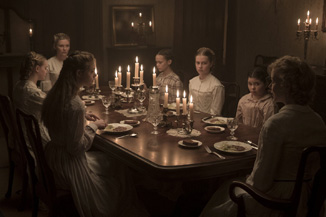|
|
Movie Review: The BeguiledBy Matthew HuntleyJuly 10, 2017
Just the same, Coppola's film could have utilized Siegel's devices earlier on by gradually sneaking them in under our radar instead bringing them to the forefront all at once merely when the narrative “called for them.” In this regard, it's traditional and straightforward because the photography and soundtrack simply mirror the present situation, which is what we expect, and therefore film loses its sneaky edge. Neither Siegel nor Coppola's film is majorly flawed as a result of its aesthetic choices, but it's interesting how both could have benefitted by lessening their own qualities and replacing them with the other's. One area where Coppola's film is flawed is with the utter abandonment of the black female slave named Hallie. Played forcibly by Mae Mercer in Siegel's version, Hallie possessed the strongest female voice in the story and refused to take orders from anyone - man or woman - lying down. Her presence lent a depth and credulity to the story because we could believe a boarding school for white girls in the 1860s would really own a black female slave, who also offered a different perspective on what was happening. Coppola's screenplay also leaves out the female characters' inner monologue, which I found chilling and unnerving in Siegel's version, and she foregoes a particularly visceral moment involving a saw, which, speaking of the soundtrack, really made you quiver when watching Siegel's film. With Siegel's The Beguiled already existing, Coppola's version is perhaps more a technical achievement than a narrative one, although it does illustrate how two different visions of the same material could have improved the other. Coppola's rendition may not be entirely necessary, and if you had to choose, Siegel's is ultimately more effective, but Coppola's still has its own virtues and there's a lot to admire about it. Her artistic decisions, especially with what she chooses to leave out, aren't the most sensible, although I'm confident she had reasons for making them. Her film involves us enough that it makes us curious what they are.
|

|
|
|

|
Friday, November 1, 2024
© 2024 Box Office Prophets, a division of One Of Us, Inc.


